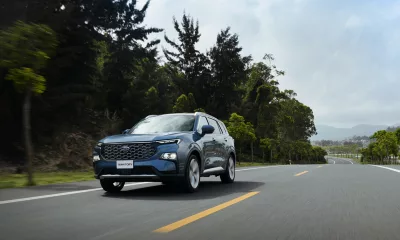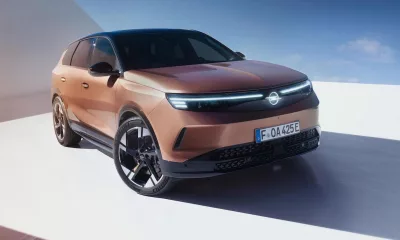The Lamborghini Murcielago Roadster, which recently had a cameo in the smash fantasy film , is now available in South Africa – for a whopping R3,7 million!Batman Begins, is now available in South Africa – for a whopping R3,7 million!content here
The Lamborghini Murcielago Roadster, which recently had a cameo in the smash fantasy film , is now available in South Africa – for a whopping R3,7 million!
First presented at last year’s Geneva Motor Show, the roadster version of Lamborghini’s flagship supercar is powered by a 426 kW 6,2-litre V12, which develops maximum power at 7 500 r/min and peak torque of 650 N.m at 5 400 r/min. According to the manufacturer, the car will storm from standstill to 100 km/h in 3,8 seconds and achieve a top speed of about 320 km/h.
, directed by Christopher Nolan and starring Christian Bale, Michael Cane, Liam Neeson, Gary Oldman and Katie Holmes, recently opened in South Africa. In the film, billionaire Bruce Wayne (Batman’s alter ego, portrayed by Bale) can be seen driving the open-topped brute from Sant’Agata in his private time, when the Batmobile is locked away in the Batcave.
Not only does Murcielago mean “bat” in Spanish, but when the supercar’s scissor doors are open, the visual impact is reminiscent of the Caped Crusader in his spread-mantle pose.
The Roadster was penned by designer Luc Donckerwolke and its overall dimensions are the same as for the coupé. Length is 4 580 mm, width is 2 045 mm, wheelbase is 2 665 mm, front track is 1635 and rear track is 1695 mm. However, the Murciélago Roadster is 70mm lower. The dry weight is 1 665 kg, with a weight distribution of 42 per cent at the front and 58 per cent at the rear.
Lamborghini’s permanent four-wheel drive system has been retained on the Roadster, with a central viscous coupling and limited slip rear and front differentials (45 per cent rear, 25 front). The standard gearbox is a 6-speed manual. As an optional feature, a 6-speed “e-gear” automatic version is available.
Apart from the absence of a roof, the roadster has streamlined headrests and fairings, and its exhausts are more aggressively styled than those of the coupé. Various structural chassis components – in steel and carbon fibre – have been redesigned to increase the model’s torsional stiffness.
In particular, there is a special stiffening lattice on the engine compartment structure. There is also the option of mounting a soft top roof (“R-top”) which, as in the tradition of this kind of model, is only designed for temporary use (for example in the case of sudden rain) and at a recommended maximum speed of 160 km/h.
The Roadster is further equipped with an automatic, electronically-controlled roll bar, which extends from its housing behind the seats in milliseconds during a roll-over emergency.
The suspension has an independent front and rear double wishbone configuration and anti-roll bars with front “antidive” and rear “antisquat” systems. Koni FSD (frequency selecting dampers) self-adjusting shock absorbers are fitted.
The braking system has been upgraded by increasing the diameter of the discs. The front disc diameter has gone from 355 to 380mm, along with an increase in thickness from 32 to 34mm, and the rear disc size has gone up from 332 x 32mm to 355 x 32mm.
The front calipers are also new and have eight pistons; the rear calipers are unchanged but the diameter of the four pistons has been increased. Apparently, the Roadster will decelerate from 200 to 0 km/h in 129,5 metres.
Inside, the car is trimmed in a combination of leather and alcantara. There are electrically-adjustable heated wing mirrors, power windows, a radio/CD system, automatic air conditioning, a non-reflective rear view mirror and a ride height control that allows the front axle of the vehicle to be raised by 45 mm at low speeds.








